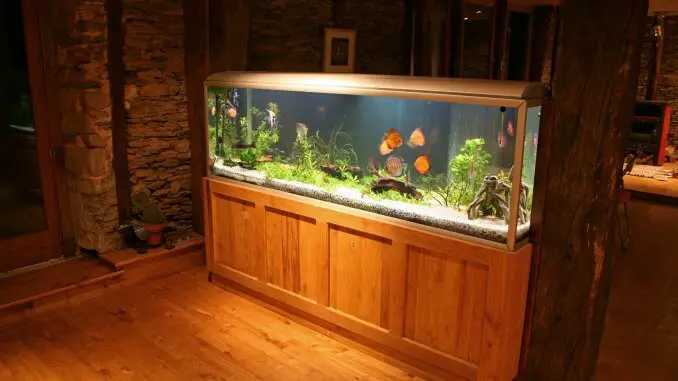
A 75-gallon aquarium is a great size tank for both beginners and experienced aquarists; there are lots of different things you can do with it.
Due to its size, you are free to pick from hundreds of fish, both freshwater and marine, as well as plants and other creatures (like invertebrates). With so much choice, you will struggle to make up your mind.
Your home will be brightened up by lots of color and activity.
This article will explain everything you need to know about the 75-gallon tank, from what fish you can keep it in, to setting it up and much more…
75 Gallon Aquarium: Everything You Need to Know
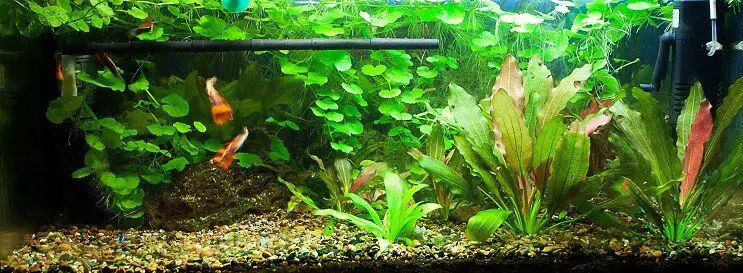
As one of the larger home aquariums, a 75-gallon fish tank gives you more freedom when deciding what you want to do. You can make a cold water, tropical, or even a marine setup – you have many more options that you do with a 10 gallon tank.
Your fish will have more space, keeping them healthier and displaying more vibrant colors.
People often choose smaller tanks because they seem less daunting, but larger tanks are easier to maintain. The more water you have in your aquarium, the more stable the water conditions will be.
This makes 75-gallon aquariums great for both beginners and more experienced fish keepers.
Prices can vary depending on the tank. Bigger tanks are more expensive than smaller tanks. Also, you may have to buy certain components (such as a filter and heater) separately since big tanks are less commonly sold as part of a kit.
Those who give these tanks a chance can keep larger fish and give territorial species the space they need. They will take up more room in your house, but they make a great centerpiece for any room.
75 Gallon Aquarium Dimensions
The typical size of a 75-gallon aquarium is 48″ x 18″ x 24″. However, this can vary slightly from tank to tank.
A tank of this size will weigh a lot more than smaller tanks, especially when filled. Expect your tank to be around 140lbs when empty and 850lbs when filled. This weight will increase further when the fish and decorations are added.
You will need a stand that can comfortably accommodate the size and weight of your tank when filled (we’ll discuss this later).
75 Gallon Aquarium Equipment
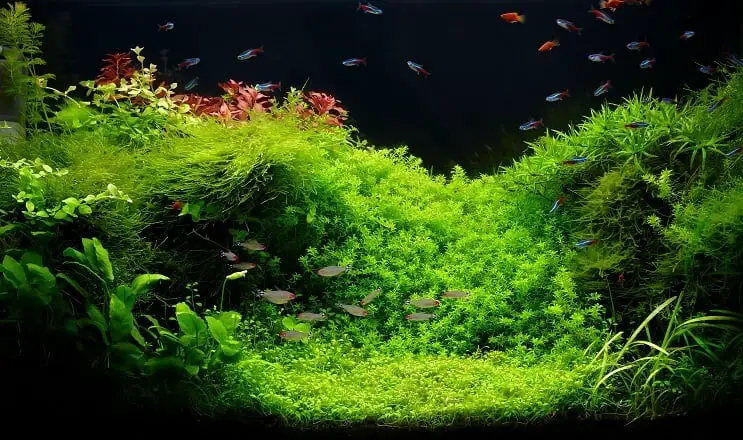
The equipment needed for a tank can differ from one to another. You need to decide which fish you want to keep before buying your equipment to make sure they are all compatible.
Here are a few common components needed for a 75 gallon home aquarium:
Filter
Every tank needs a filter; it’s arguably the most important part of any setup.
They play a few different roles. One is to remove debris from the water, while also preventing the buildup of toxins.
A filter also helps to aerate the water. Oxygen is needed in the water so that your fish can breathe. Some tanks will come with a filter, but most of the time you will have to buy one yourself. The filter’s packaging will indicate which size tank the filter is ideal for.
After a while you might have to replace the filter’s internal media, to keep it functioning efficiently.
Heater
Heaters are used in most tanks, but they aren’t crucial for all of them. It depends on the type of fish you are planning to keep.
Tropical and marine setups need a heater because these types of fish live in warmer regions. Some fish are used to cold water though, and don’t need a heater – goldfish are a common example.
There’s a wider variety of tropical and marine fish, so these are the most popular tanks.
Like the filter, you need a heater of the right size, so it’s powerful enough to heat all the water in the tank. A 300W heater is ideal for a tank of this size.
Lights
Most tanks will come with a set of lights, usually as part of the hood. However, some fish (or plants) might need these replaced for brighter lights. This is a good example of why you should know which fish you want before buying equipment.
Bulbs come is lots of different colors and intensities which can affect the life in your tank. Bright light can stress some fish out while causing plants and algae to grow quicker.
Stand
When buying a new tank, you usually get the choice of buying a stand with it. The stand would have been specially designed for the tank and will be able to support its size and weight.
You could also use a surface you have at home, like a sturdy cabinet. If you choose this option, the surface needs to be bigger than the dimensions of your tank.
You will also need to check that it can support the weight of a filled tank too.
Hood
Tanks are commonly sold with hoods. These are important because they keep some things in, and other things out of the tank.
Some fish jump and will escape the tank without a tight-fitting lid. A hood will also stop things that may pollute the water from falling into the tank.
Over time, the water level of your tank will decrease through evaporation. A hood will slow this process down.
Other Equipment
- An air pump can be used to oxygenate the water and help circulate water. This is particularly useful in tanks without plants, since they release a lot of oxygen.
- A thermometer is helpful to make sure that the water is the right temperature. Place it at the opposite end of the tank to the heater for the most accurate readings.
- You will need some equipment for cleaning the tank, such as algae magnets, a fish net and gravel vacuums. Cleaning the tank is crucial for maintaining a healthy environment.
- The bottom of the tank should be covered in a layer of substrate. You can buy different grain sizes, including sands and gravels.
- Lastly, you can pick some decorations. These could be natural-looking features like rocks and bogwood, or fun-themed objects from fish stores. Choose decorations around the needs of your fish, many prefer some caves and crevices.
If you are starting a marine tank, you will need a couple of extra things. Live rock is an important addition as it can introduce some extra food for your fish. Salt will also be needed to raise the salinity of your water.
What Fish Can You Keep in a 75 Gallon Aquarium? (Stocking Ideas)
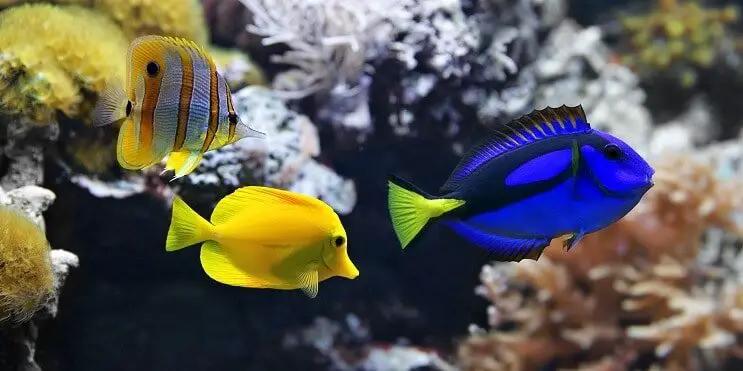
The size of a tank determines which fish you can keep, and also how many.
75 gallons can hold cold water, tropical, or marine fish. There are so many to choose from, that it is difficult to pick which one you want to keep at home.
You can choose some favorites based on their looks and behaviors, but then you need to research them. This involves checking that they all have similar water preferences and that they won’t fight (or eat) each other.
Some other things to look out for, is how big they will grow and how many you can keep.
There are fewer options for cold water tanks. Goldfish (and fancy goldfish) are the most popular, but others include Weather Loaches and Zebra Danios.
There are lots of tropical fish; here are a few popular ones for 75-gallon tanks:
- Zebra Danio: They are not just limited to cold-water, they enjoy warmer temperatures too. This is a small and hardy species that are great for beginners.
- Marble Hatchetfish: These small fish spend their time at the surface, so make sure you have a tight-fitting lid!
- Silver Dollars: This shiny species is round and flat, resembling an old silver dollar.
- Oscar: An aggressive cichlid that doesn’t play well with others. It remains popular through its personality and orange splotches across its body.
- Bettas: Another species known for aggression. Their flowing fins are a spectacle.
There are many marine species too such as:
- Clownfish: One of the most famous fish in the world, it can be hard to resist.
- Regal Angelfish: A beautiful stripy fish that thrives around coral reefs.
- Moorish Idol: This is an easily recognizable fish from the Indo-Pacific Ocean. They’re ideal for coral reefs.
- Mandarin Fish: One of the most colorful fish available. Small, peaceful, and mesmerizing.
- Banggai Cardinalfish: An elegant species that are usually seen hovering around plants and anemones, since they’re nocturnal.
Once you have chosen the fish you want, you can start designing the tank to meet their needs.
You may decide that you want some invertebrates (like shrimp and snails). These add a different dynamic, but make sure that they can be safely kept with the fish you want. The same goes for plants.
75 Gallon Fish Tank Setup Ideas
A tank of this size can be used in lots of different ways, making it difficult to decide how you want to use yours.
Here are just a few possibilities:
Community Tank
One option is to mix a variety of species together. You get to pick some of your favorite fish and show off lots of different personalities.
Community aquariums take some planning because you need to make sure all your fish will be compatible. They all need to have similar water preferences and there can’t be a risk of one eating the others.
Some people design a biotope tank. This is one that resembles waters from a certain area, so all the fish would occur naturally together in the wild.
You can make use of all the space in the tank, choosing fish that prefer different levels of the tank.
The possibilities are endless when choosing tank mates for a community. A peaceful tropical example could include a pair of Angelfish, some Marbled Hatchetfish in the upper levels, a group of Zebra Danios in the mid-levels, and some kuhli loaches for the lower levels.
Species Tank
Another option is to keep a species only tank. This might sound like a less interesting design, but a group of one species can be a striking sight.
The focus remains on the one species, bringing out their colors and behaviors. You will soon learn what makes these fish special as you watch them interact with each other and their environment.
If all the fish are the same, then they will all have the same requirements. This means you can set the parameters of the tank to meet their ideal preferences, without having to consider what other species need.
An example of a vividly colored species tank, is to have 4 or 5 Electric Blue Acaras.
Other Options
Fish aren’t the only creatures that you can keep in a tank. Crabs are another popular choice for people that want more exotic inhabitants. Turtles, shrimp and snails work too.
You can also design a tank around plants. Usually, you would pair them up with some fish, but you can make a paludarium instead. This lets you fill the aquarium with a dense selection of plants, mixing species, shapes, and sizes.
Finally, you could also use your 75-gallon aquarium as a breeding or quarantine tank. These would normally be smaller tanks though because the fish take up less space.
How to Set Up Your 75 Gallon Aquarium
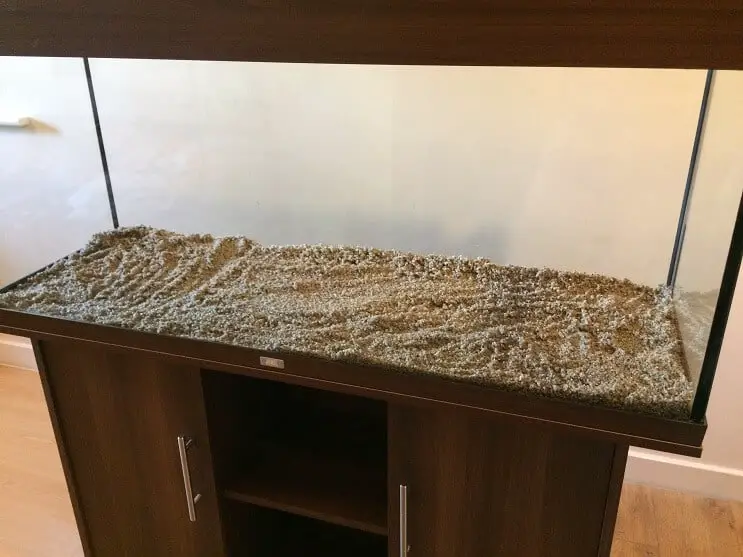
The first thing you need to do is to clean everything. A new tank may be dusty so use a cloth to remove all the dust. A used tank should be wiped down with white vinegar and hot water.
Next, you need to rinse the substrate; you will see lots of fine particles turn the water cloudy. Keep rinsing until the water turns clear. Give anything else that will go into the tank a quick rinse too.
Now you need to pick a location for your tank. You have to be 100% sure because once the tank is filled it’s so heavy, which makes it virtually impossible to move.
Add a layer of substrate to the bottom of the tank (about 1-2 inches thick). Put all your equipment in place, but don’t turn any of them on yet. You can now fill your tank with water. Don’t fill it all the way, leave some space for the water level to rise once the fish and decorations are added.
Remember: Tap water contains lots of chlorine which is toxic to fish, add some dechlorinator into the tank to remove it. The amount you need will be mentioned on the side of the bottle.
A new tank must be cycled before you add fish. This process allows a bacterial population to grow and can take up to 6 weeks. The tank will cycle itself, so you just need a water testing kit to check that it has finished. Check ammonia, nitrite and nitrate levels every week.
At around 2 weeks, nitrite levels will spike, before reducing again. Once ammonia and nitrite levels are 0ppm, the cycle has ended.
You can now add fish to your tank.
Summary
Each aquarium has its own advantages and disadvantages; the right one for you depends on your situation. If you have the space, and money, then a 75-gallon fish tank is a great choice.
This larger tank can hold some larger fish that might not fit in a 20-gallon aquarium. This means there is a lot more you can do with it.
It’s just as simple to set up as a smaller tank, but it is actually easier to maintain the water parameters because of the larger body of water.
Picking the right tank is a big decision. Deciding on a 75-gallon tank means you have the space to design your perfect tank.
What would you keep in a 75 gallon aquarium? Let us know in the comments below…

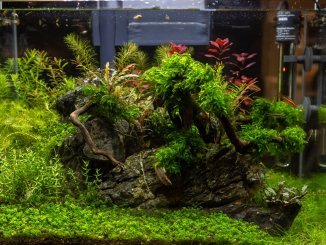
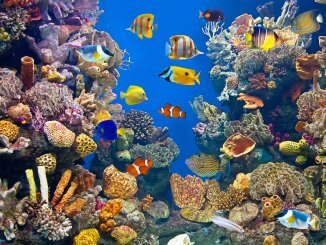
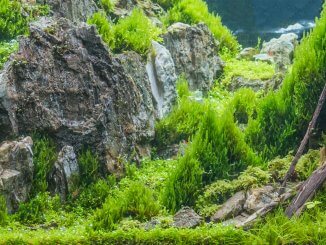
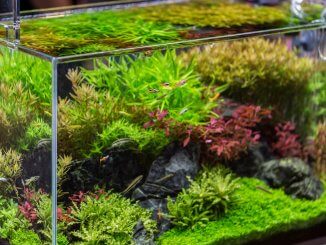
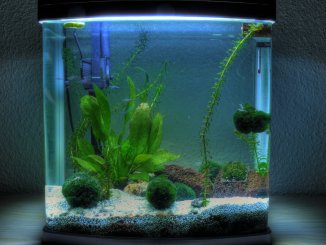
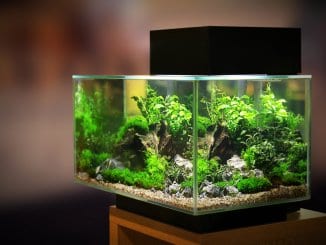

In my freshwater tank, I have tiger barbs, golden diamond barbs, and Queen or Bengal loaches. It is a wonderfully active tank that I have affectionately dubbed “the hooligan tank” ?
I live in Florida. I was pulling out overpopulated plants which had grown halfway into the yard. I found a little turtle under at least 6 inches of vegetation. No other siblings, so he wasn’t hatched there, so we figured he escaped from someone’s dinner plans. He was small (fit in the palm of my hand, which is small) and pretty flat. Tried to research him, as best I can figure he is a red – bellied slider. SHE (as I later found in my travels online, was a girl) she lives in a 20 gallon tank (she outgrew the 5 VERY quickly) with 3 little Comet goldfish and 10 baby Mystery snails.
Suddenly, it dawned on me yesterday, I live 6 miles from the beach, I could have a salt water aquarium, if I wanted. We kept fish when I was very young, and had a ginormous aquarium and 2 smaller ones. I always wanted to put together an aquarium with all kind of little creatures – mini lobsters, crabs, frogs, some kind of eel-like looking fish, catfish, clams, snails. Basically, anything and everything but minimal fish.
I am new to the hobby and I keep central and South American Cichlids. They give me hours of entertainment.
I have 23 Koi’s And goldfish. When I was renting a house the older couple had a outside pond. So now I have them in my 75 Gal tank. I don’t have a heater,but shouldn’t I get one? Also I can NEVER KEEP PLACOS. What am I doing wrong? HELP
Don’t get a heater goldfish like cold water
I have a 75 gallon with 13 congo tetras and 2 female kribensis.
Any suggestions on who may sell hoods for a 75 gal tank? They seem to be hard to find.
I have a 75 gallon tank with 4 Oscar, 4 covet, 3 jack Dempsey along with 4 alergee can I add any more fish in this tank
I currently have a lovely 10 gallon tank! In it I have:
5 Neon tetra’s
4 Black Neon Tetra’s
3 Gold Zebra Danios
3 Ottocyncils
3 Corydoras
3 Mollies
1 Nerite Snail
I have been actively looking for a 75 gallon tank and once it’s all set up and cycled, I will add all my current fish into it. I plan to add along with:
10 Cardinal Tetra’s
3 more Corydoras
3 smaller types of Plecos
27 Danios 10 Zebra, 7 Gold Zebra and 10 spotted dwarf
3-5 more Ottocyncils
6-10Rainbow fish
6 ramsRams
10 Harlequin Rasbora
10 Cherry Barbs
10 Rummynose Tetras
And last but not least 1 mostly orange Angelfish!
This tank is going to be my home movie theatre. I was told by my local fish store that my 75 should be arriving by August 2, 2021! My goal is to have my Angelfish in the tank around November of this year. The tank will create our quiet zone. Opposite the tank will be a couch that we can sit, turn on classical music and just reminisce about what’s going on in the tank. The Angelfish is our centrepiece and focus of the tank!
Oh and I will adding 5 more Neon tetras, and 6 more black neon tetras